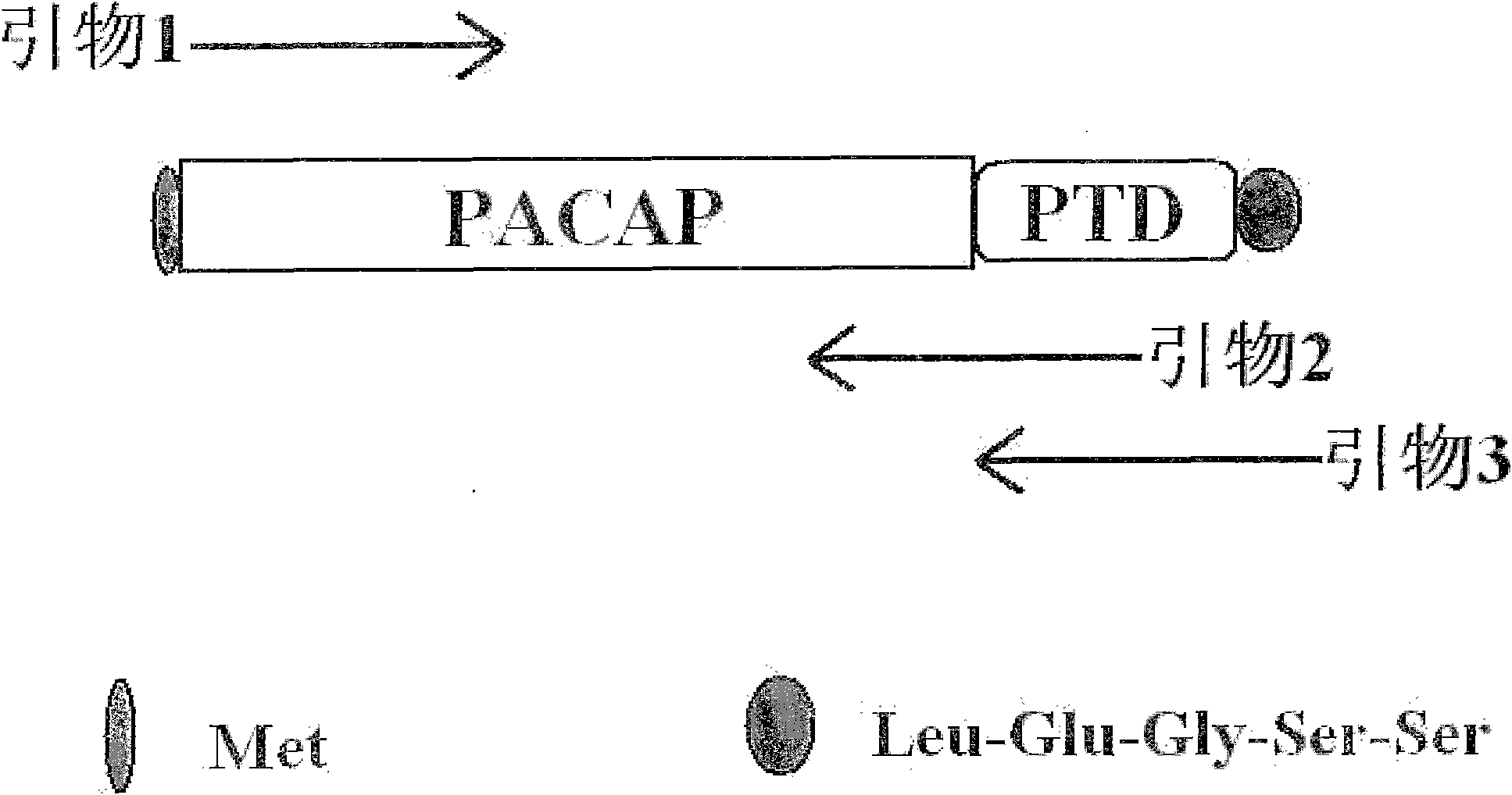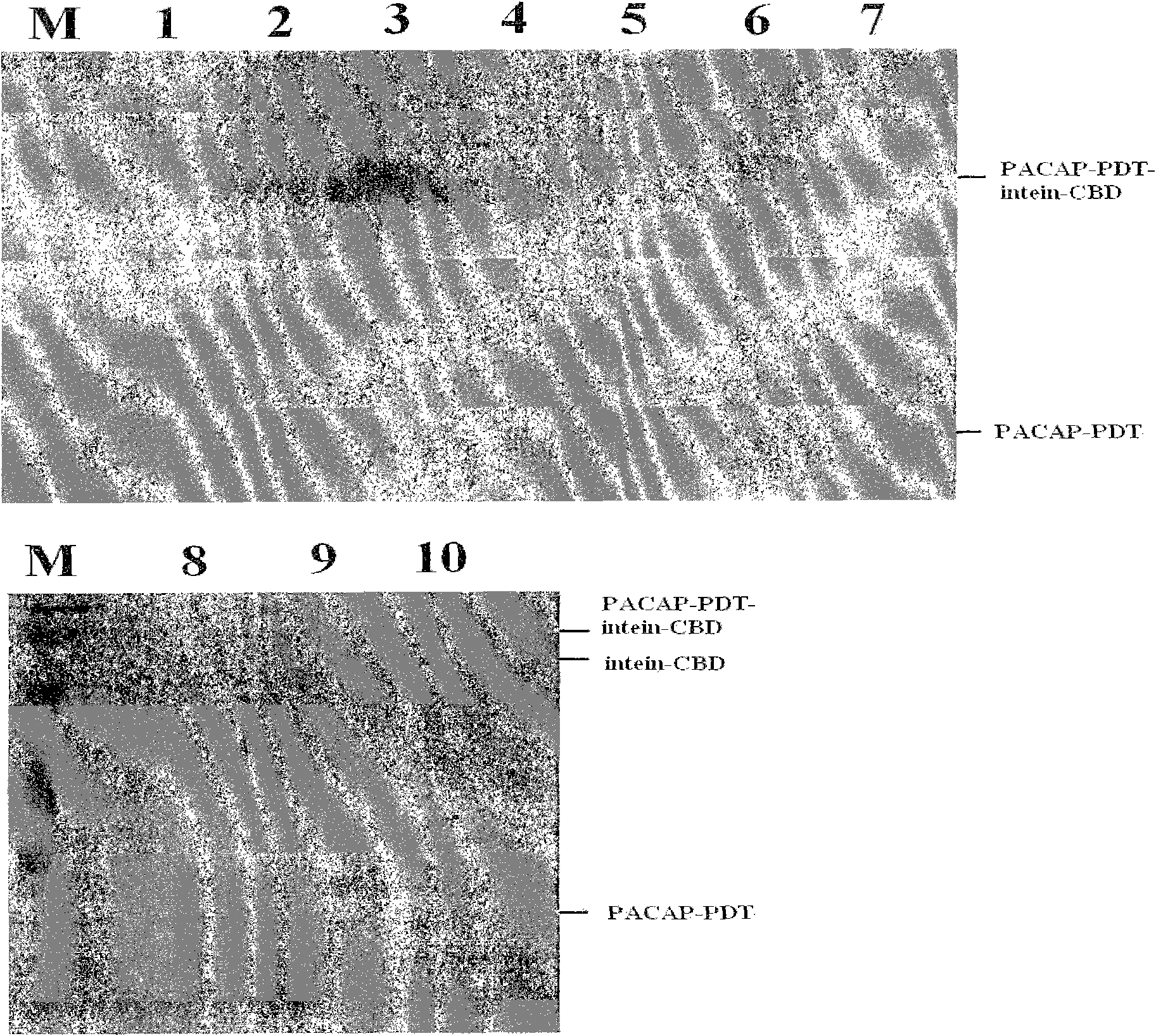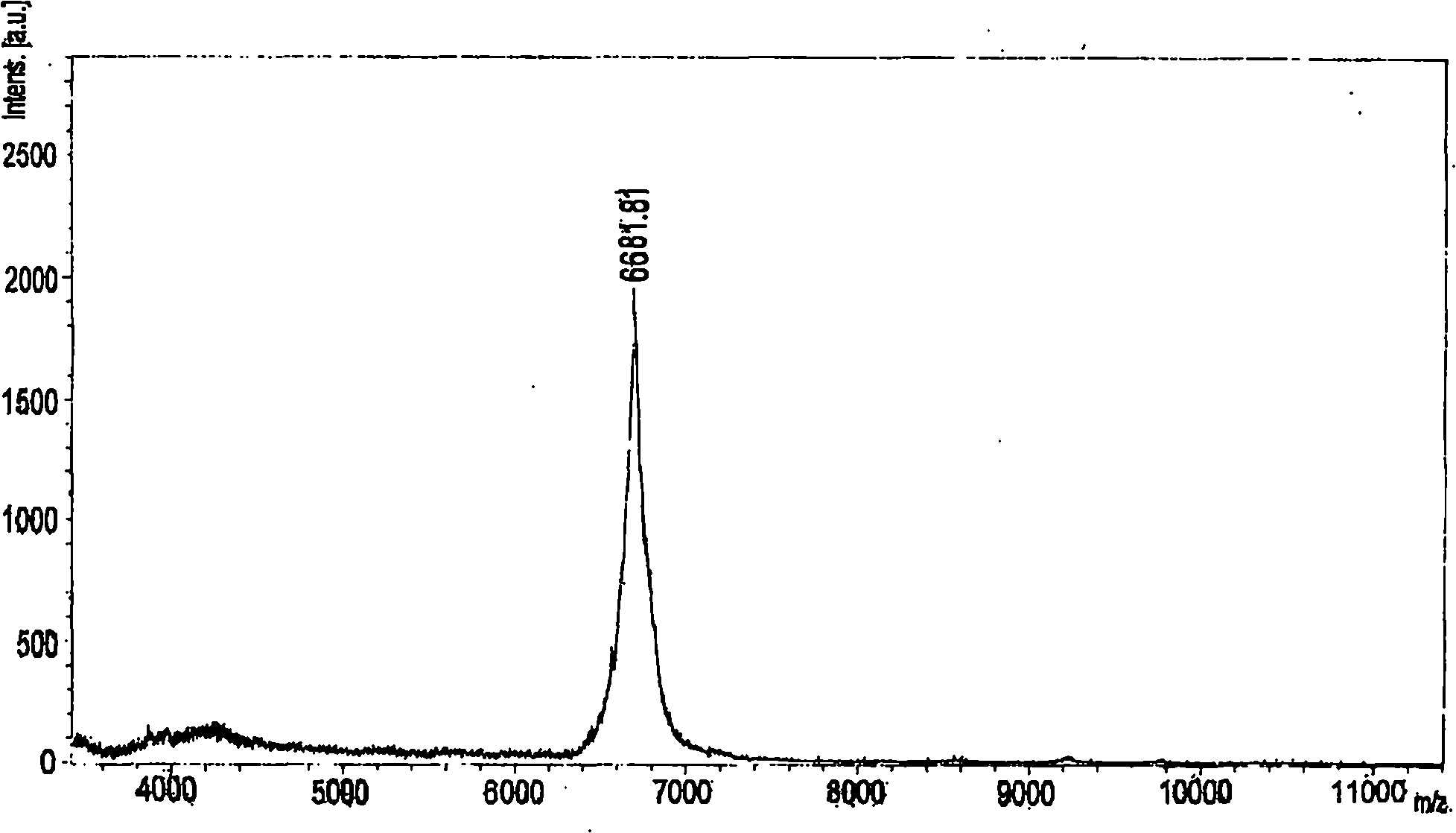Recombination fusion protein PACAP-PTD (Pituitary Adenylate Cyclase Activating Peptide-Protein Transduction Domain) as well as expression method and application thereof
A PACAP-PTD and fusion protein technology, which is applied in the field of recombinant fusion protein PACAP-PTD and its expression, can solve the problems of no related reports, PACAP polypeptide delivery, etc., and achieve the effect of improving drug access and expanding the scope of application
- Summary
- Abstract
- Description
- Claims
- Application Information
AI Technical Summary
Problems solved by technology
Method used
Image
Examples
Embodiment 1
[0055] Embodiment 1 Preparation of recombinant fusion protein PACAP-PTD
[0056] The preparation of the recombinant fusion protein PACAP-PTD in this embodiment includes the following steps:
[0057] 1. Amplification and cloning of PACAP-PTD gene:
[0058] First design and synthesize 3 primers:
[0059] Primer 1, the nucleotide sequence of which is shown in SEQ ID NO: 4;
[0060] Primer 2, the nucleotide sequence of which is shown in SEQ ID NO: 5;
[0061] Primer 3, the nucleotide sequence of which is shown in SEQ ID NO:6.
[0062] In the above three primers, N represents the protected base, CATATG is the NdeI restriction site, CTCGAG It is the XhoI restriction site.
[0063] Two-step PCR:
[0064] (1) The first step of PCR, using the existing PACAP gene as a template, the PCR reaction system is: primer 2 (0.01A / μL) 1 μL, primer 3 (0.01A / μl) 1 μL, plasmid containing PACAP gene 1 μL, dNTP 10μL, 10×TaKaRa Ex Buffer 10μL, TaKaRa Ex Taq Enzyme 1μL and H 2 O 76μL; PCR reac...
Embodiment 2
[0079] Example 2 Recombinant fusion protein PACAP-PTD promotes PAC1-CHO cell proliferation
[0080] PAC1-CHO cells specifically expressing the PACAP receptor PAC1 were plated in a 96-well plate, and when the cell density reached about 80%, serum-free culture (starvation culture) was used for overnight culture, and gradient concentrations of PACAP-PTD (1nM, 10nM, 100nM, 1000nM) were incubated, and the cell viability was measured by MTT after 24 hours.
[0081] The result is as Figure 4 As shown, PACAP-PTD has the activity of significantly (P<0.01) promoting the proliferation of PAC1-CHO, indicating that PACAP-PTD can effectively activate the PAC1 receptor in vivo.
Embodiment 3
[0082] Example 3 Functional Detection of the Recombinant Fusion Protein PTD-PACAP Penetrating the Blood-Brain Barrier Membrane
[0083] Use the FITC (fluorescein isothiocyanate) labeling kit to fluorescently label PACAP-PTD and PACAP, measure the concentration of the labeled protein and the fluorescence value of the labeled protein, and calculate the polypeptide labeling efficiency (that is, the value of FITC per mol polypeptide).
[0084] KM mice were randomly divided into two groups according to body weight, and were injected intraperitoneally: PACAP-FITC 0.1nmol / kg; and PACAP-PTD-FITC 0.1nmol / kg; 6 hours after injection, the mice were killed by cervical dislocation, and the brain tissues of the mice were collected. Rinse several times with PBS. Dispense into EP tubes at a ratio of 150mg wet brain tissue / 1ml PBS, ultrasonically break for 45s, centrifuge at 16000g for 30min at 4°C, take 200ul of the supernatant and add it to a 96-well plate, use a fluorescence spectrophotomet...
PUM
 Login to View More
Login to View More Abstract
Description
Claims
Application Information
 Login to View More
Login to View More - Generate Ideas
- Intellectual Property
- Life Sciences
- Materials
- Tech Scout
- Unparalleled Data Quality
- Higher Quality Content
- 60% Fewer Hallucinations
Browse by: Latest US Patents, China's latest patents, Technical Efficacy Thesaurus, Application Domain, Technology Topic, Popular Technical Reports.
© 2025 PatSnap. All rights reserved.Legal|Privacy policy|Modern Slavery Act Transparency Statement|Sitemap|About US| Contact US: help@patsnap.com



